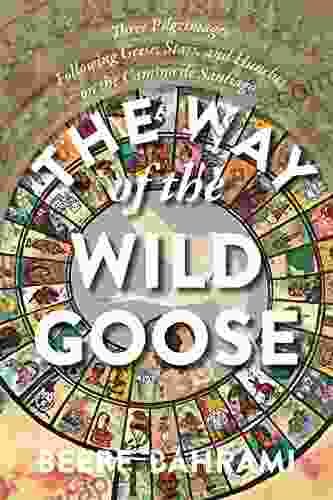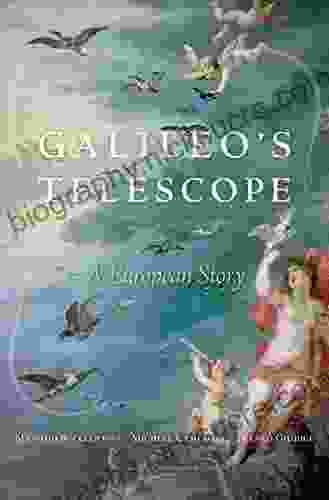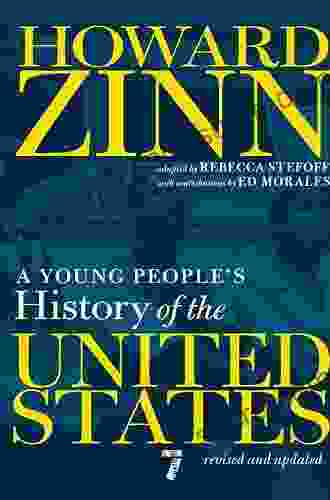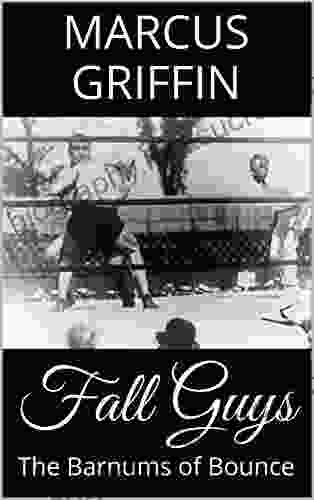Galileo's Telescope: A European Story

Galileo Galilei was an Italian astronomer, physicist and mathematician who lived in the 16th and 17th centuries. He is best known for his pioneering work in astronomy, particularly for his discovery of the four largest moons of Jupiter and his support for the heliocentric theory of the solar system. Galileo's telescope was a key instrument in his astronomical discoveries and was one of the most important scientific instruments of the early modern period.
Galileo's telescope was not the first telescope ever invented. The first telescopes were invented in the Netherlands in the late 16th century by Hans Lippershey and Zacharias Janssen. However, Galileo's telescope was the first to be used for astronomical observations, and it was far more powerful than any previous telescope. Galileo's telescope had a magnification of about 20x, which allowed him to see objects that were 20 times closer than they would appear to the naked eye.
4 out of 5
| Language | : | English |
| File size | : | 9191 KB |
| Text-to-Speech | : | Enabled |
| Screen Reader | : | Supported |
| Enhanced typesetting | : | Enabled |
| Print length | : | 352 pages |
Galileo first used his telescope to observe the Moon. He saw that the Moon was not a smooth sphere, as had been previously believed, but was instead covered in craters and mountains. Galileo also observed the Sun, and he saw that it was not a perfect sphere, but was instead slightly flattened at the poles. Galileo's observations of the Moon and the Sun provided strong evidence for the heliocentric theory of the solar system, which states that the Earth and other planets revolve around the Sun.
Galileo's telescope also allowed him to make a number of other important astronomical discoveries. He discovered the four largest moons of Jupiter, which he named the Medicean Moons after his patron, the Grand Duke of Tuscany. Galileo also observed the phases of Venus, which provided further evidence for the heliocentric theory. Galileo's discoveries revolutionized astronomy and helped to lay the foundation for modern science.
Galileo's telescope was a revolutionary invention that changed the course of astronomy and science. It was the first telescope to be used for astronomical observations, and it was far more powerful than any previous telescope. Galileo's telescope allowed him to make a number of important astronomical discoveries, including the four largest moons of Jupiter and the phases of Venus. These discoveries provided strong evidence for the heliocentric theory of the solar system, which states that the Earth and other planets revolve around the Sun. Galileo's telescope was a key instrument in the development of modern astronomy and science, and it continues to be used by astronomers today.
The Impact of Galileo's Telescope on European Culture and Society
Galileo's telescope had a profound impact on European culture and society. It changed the way people thought about the world and their place in it. Before Galileo's telescope, people had believed that the Earth was the center of the universe and that the Sun and other planets revolved around it. Galileo's discoveries showed that the Earth was not the center of the universe and that the Sun was the center of the solar system. This new understanding of the universe had a profound impact on people's religious beliefs and their view of humanity's place in the cosmos.
Galileo's telescope also had a significant impact on the development of science. Before Galileo, most scientific knowledge was based on the writings of ancient Greek philosophers, such as Aristotle and Ptolemy. Galileo's discoveries showed that the ancient philosophers were not always correct, and that new scientific knowledge could be gained through observation and experimentation. Galileo's work helped to establish the scientific method as the primary means of gaining scientific knowledge.
Galileo's telescope was a revolutionary invention that had a profound impact on European culture and society. It changed the way people thought about the world and their place in it, and it helped to establish the scientific method as the primary means of gaining scientific knowledge. Galileo's telescope is a testament to the power of human ingenuity and the importance of scientific inquiry.
Galileo Galilei was one of the most important scientists in history. His invention of the telescope revolutionized astronomy and science, and his discoveries changed the way people thought about the world and their place in it. Galileo's telescope is a testament to the power of human ingenuity and the importance of scientific inquiry.
4 out of 5
| Language | : | English |
| File size | : | 9191 KB |
| Text-to-Speech | : | Enabled |
| Screen Reader | : | Supported |
| Enhanced typesetting | : | Enabled |
| Print length | : | 352 pages |
Do you want to contribute by writing guest posts on this blog?
Please contact us and send us a resume of previous articles that you have written.
 Fiction
Fiction Non Fiction
Non Fiction Romance
Romance Mystery
Mystery Thriller
Thriller SciFi
SciFi Fantasy
Fantasy Horror
Horror Biography
Biography Selfhelp
Selfhelp Business
Business History
History Classics
Classics Poetry
Poetry Childrens
Childrens Young Adult
Young Adult Educational
Educational Cooking
Cooking Travel
Travel Lifestyle
Lifestyle Spirituality
Spirituality Health
Health Fitness
Fitness Technology
Technology Science
Science Arts
Arts Crafts
Crafts DIY
DIY Gardening
Gardening Petcare
Petcare Joseph Schmuller
Joseph Schmuller Deanna Roy
Deanna Roy Nicholas Sparks
Nicholas Sparks Sam Nadler
Sam Nadler Edith Grossman
Edith Grossman Kenton Kroker
Kenton Kroker Mike Allison
Mike Allison Linda Carroll
Linda Carroll Ernie Morton
Ernie Morton Cary J Griffith
Cary J Griffith James Kilgo
James Kilgo Print Replica Kindle Edition
Print Replica Kindle Edition Kate Darling
Kate Darling Pavla Kesslerova
Pavla Kesslerova Leah Cullis
Leah Cullis Catherine J Allen
Catherine J Allen Sharon Dukett
Sharon Dukett Mark Young
Mark Young Lock Gareth
Lock Gareth Mia Scotland
Mia Scotland Christopher Taylor Ma Lmft
Christopher Taylor Ma Lmft Nina Manning
Nina Manning Paul Doiron
Paul Doiron Chiara Sparks
Chiara Sparks Percy Boomer
Percy Boomer Conor Nolan
Conor Nolan Hongyu Guo
Hongyu Guo Otto Scharmer
Otto Scharmer Thomas French
Thomas French Mark Ellyatt
Mark Ellyatt Buddy Levy
Buddy Levy Richard Scott
Richard Scott James Duggan
James Duggan Craig Lambert
Craig Lambert Stephen J Bavolek
Stephen J Bavolek Beth Miller
Beth Miller Kyle Butler
Kyle Butler Cara Koscinski
Cara Koscinski Robin Nixon
Robin Nixon David Aretha
David Aretha Rachel Dash
Rachel Dash Cynthia Levinson
Cynthia Levinson Malcolm Hebron
Malcolm Hebron Ian Leslie
Ian Leslie Barzin Pakandam
Barzin Pakandam Khurshed Batliwala
Khurshed Batliwala Scarlett Thomas
Scarlett Thomas Ben Goldacre
Ben Goldacre Barbara Bassot
Barbara Bassot Gabriyell Sarom
Gabriyell Sarom Pat Shipman
Pat Shipman Barry Rhodes
Barry Rhodes Joanna Hunt
Joanna Hunt Vanessa Ogden Moss
Vanessa Ogden Moss Beau Miles
Beau Miles Bob Holtzman
Bob Holtzman Nancy E Willard
Nancy E Willard Basudeb Bhatta
Basudeb Bhatta Macauley Lord
Macauley Lord Christopher L Heuertz
Christopher L Heuertz Denton Salle
Denton Salle Daniel J Barrett
Daniel J Barrett Isabel Fonseca
Isabel Fonseca Steven Hawthorne
Steven Hawthorne Debra Kilby
Debra Kilby John Lister Kaye
John Lister Kaye Alastair Hannay
Alastair Hannay Barbara Illowsk
Barbara Illowsk Bb
Bb Brandon Royal
Brandon Royal Violet Moller
Violet Moller Richard Chun
Richard Chun James C Radcliffe
James C Radcliffe Massimo Cossu Nicola Pirina
Massimo Cossu Nicola Pirina Ben Sedley
Ben Sedley R L Medina
R L Medina Charlie Shamp
Charlie Shamp Candice Davie
Candice Davie Kam Knight
Kam Knight Brad Burns
Brad Burns Roanne Van Voorst
Roanne Van Voorst Benita Bensch
Benita Bensch Jade Barrett
Jade Barrett W Hamilton Gibson
W Hamilton Gibson Chris Eberhart
Chris Eberhart Robin Mcmillan
Robin Mcmillan Margaret Owen
Margaret Owen Kate Williams
Kate Williams Matt Taddy
Matt Taddy David Jamieson Bolder
David Jamieson Bolder Carlo Collodi
Carlo Collodi Pearson Education
Pearson Education Elliott Vandruff
Elliott Vandruff Eric Leiser
Eric Leiser Jenn Mcallister
Jenn Mcallister Daniel S Lobel Phd
Daniel S Lobel Phd John Quick
John Quick Becca Anderson
Becca Anderson Catherine Shainberg
Catherine Shainberg Sampson Davis
Sampson Davis Barry Rabkin
Barry Rabkin Eliza Reid
Eliza Reid Sam Kean
Sam Kean Jaymin Eve
Jaymin Eve Max Marchi
Max Marchi Michelle Rigler
Michelle Rigler John Henry Phillips
John Henry Phillips Graham R Gibbs
Graham R Gibbs Richard J Dewhurst
Richard J Dewhurst Rob Rains
Rob Rains Farley Mowat
Farley Mowat Rob Pope
Rob Pope Richard Harris
Richard Harris Jonathan Kellerman
Jonathan Kellerman Richard Weissbourd
Richard Weissbourd Mary A Fristad
Mary A Fristad Simon Spurrier
Simon Spurrier Autumn Carpenter
Autumn Carpenter Timothy Pakron
Timothy Pakron Julian I Graubart
Julian I Graubart Danny Staple
Danny Staple Mark H Newman
Mark H Newman Muhammad Zulqarnain
Muhammad Zulqarnain Shmuel Peerless
Shmuel Peerless Howard Zinn
Howard Zinn Gay Robins
Gay Robins Nichole Carpenter
Nichole Carpenter Barbara Mertz
Barbara Mertz Master Gamer
Master Gamer Susan Scott
Susan Scott Peter K Tyson
Peter K Tyson Jean Illsley Clarke
Jean Illsley Clarke Vanessa Garbin
Vanessa Garbin Eric Engle
Eric Engle Erik J Brown
Erik J Brown Ken Xiao
Ken Xiao Edward Lee
Edward Lee Laura Pavlov
Laura Pavlov John D Barrow
John D Barrow Dustin Salomon
Dustin Salomon Beau Bradbury
Beau Bradbury Laura Ingalls Wilder
Laura Ingalls Wilder Geert Hofstede
Geert Hofstede John Garrity
John Garrity St Louis Post Dispatch
St Louis Post Dispatch Colleen Alexander Roberts
Colleen Alexander Roberts Reelav Patel
Reelav Patel Mike Massie
Mike Massie Ellen Lewin
Ellen Lewin Bonnie Tsui
Bonnie Tsui David A Bogart
David A Bogart Gary Lincoff
Gary Lincoff Monta Z Briant
Monta Z Briant Glenna Mageau
Glenna Mageau Rebecca Solnit
Rebecca Solnit Bobbie Faulkner
Bobbie Faulkner Brian Switek
Brian Switek Diane Yancey
Diane Yancey Ron Lemaster
Ron Lemaster Spencer Wells
Spencer Wells Mina Lebitz
Mina Lebitz Gordon Witteveen
Gordon Witteveen William H Frey
William H Frey Bill Mckibben
Bill Mckibben Basu Shanker
Basu Shanker Noah Brown
Noah Brown Jeremy Sweet
Jeremy Sweet Steve Burrows
Steve Burrows Graham Farmelo
Graham Farmelo Martin Sternstein
Martin Sternstein William Wasserman
William Wasserman Elizabeth Lockwood
Elizabeth Lockwood Barbara Gastel
Barbara Gastel Jen Houcek
Jen Houcek Dan R Lynch
Dan R Lynch Joanne Glenn
Joanne Glenn Rhonda Belle
Rhonda Belle Debbie M Schell
Debbie M Schell Susan Nance
Susan Nance Boy Scouts Of America
Boy Scouts Of America Nadine Hays Pisani
Nadine Hays Pisani Barbara Ann Kipfer
Barbara Ann Kipfer Burt L Standish
Burt L Standish Barbara Kennard
Barbara Kennard Michael Wood
Michael Wood Brian Gilbert
Brian Gilbert Paul Van Lierop
Paul Van Lierop Ryan T White
Ryan T White Breanna Hayse
Breanna Hayse Barbara Rogoff
Barbara Rogoff Linda Welters
Linda Welters Frederick Douglass Opie
Frederick Douglass Opie Kathleen Masters
Kathleen Masters Linnea Dunne
Linnea Dunne Edwin R Sherman
Edwin R Sherman Dr Faith G Harper
Dr Faith G Harper Joshua G Shifrin
Joshua G Shifrin Scott Malthouse
Scott Malthouse Bashir Hosseini Jafari
Bashir Hosseini Jafari Nicole Martin
Nicole Martin Cheryl Erwin
Cheryl Erwin J C Cervantes
J C Cervantes Oliver T Spedding
Oliver T Spedding Charlotte Browne
Charlotte Browne Leonard M Adkins
Leonard M Adkins Reprint Edition Kindle Edition
Reprint Edition Kindle Edition Jeff Belanger
Jeff Belanger Joseph Alton M D
Joseph Alton M D Lynn Rosen
Lynn Rosen Marie Rutkoski
Marie Rutkoski Grey Owl
Grey Owl Ben Povlow
Ben Povlow Sean Mcindoe
Sean Mcindoe Tami Anastasia
Tami Anastasia John Kimantas
John Kimantas Babu The Panda
Babu The Panda Erica Schultz
Erica Schultz Charlotte Booth
Charlotte Booth Barbara Taylor
Barbara Taylor Barry Burd
Barry Burd Nick Neely
Nick Neely Janna Levin
Janna Levin Marco Grandis
Marco Grandis T H White
T H White Beebe Bahrami
Beebe Bahrami Catherine M Cameron
Catherine M Cameron Randy Baker
Randy Baker Meghan L Marsac
Meghan L Marsac Marshall Jon Fisher
Marshall Jon Fisher Vincent Bossley
Vincent Bossley Jeff Alt
Jeff Alt Scott Mactavish
Scott Mactavish James Duthie
James Duthie Donald Frias
Donald Frias Stefan Ecks
Stefan Ecks Barbara Russell
Barbara Russell Guy P Harrison
Guy P Harrison David Taylor
David Taylor Bruce Pascoe
Bruce Pascoe Jim Wharton
Jim Wharton Mark Rashid
Mark Rashid Prince Asare
Prince Asare David Abram
David Abram Mike Commito
Mike Commito James Randi
James Randi Yang Kuang
Yang Kuang Mike High
Mike High Tim Marshall
Tim Marshall Ray Comfort
Ray Comfort Holger Schutkowski
Holger Schutkowski Janis Keyser
Janis Keyser Richard H Immerman
Richard H Immerman Ben Collins
Ben Collins Larry Dane Brimner
Larry Dane Brimner Fabien Clavel
Fabien Clavel Chuck Missler
Chuck Missler William Byers
William Byers Chase Hill
Chase Hill Jayanti Tambe
Jayanti Tambe Jennifer Estep
Jennifer Estep Shannon Reilly
Shannon Reilly Toby A H Wilkinson
Toby A H Wilkinson Jane Butel
Jane Butel Suzanne Wylde
Suzanne Wylde Mike Stanton
Mike Stanton Gary Soto
Gary Soto Sam Harris
Sam Harris S E Hinton
S E Hinton Geoffrey Finch
Geoffrey Finch John Aldridge
John Aldridge Diane Cardwell
Diane Cardwell Mykel Hawke
Mykel Hawke Hollis Lance Liebman
Hollis Lance Liebman John Sandford
John Sandford Dan Golding
Dan Golding Jack Newman
Jack Newman Ping Li
Ping Li Chadd Vanzanten
Chadd Vanzanten Lily Collins
Lily Collins Suzanne Leonhard
Suzanne Leonhard Wayne B Chandler
Wayne B Chandler Justin Sirois
Justin Sirois Melissa Gomes
Melissa Gomes David Thomas
David Thomas Steven Bell
Steven Bell Ascencia
Ascencia Rachel Smith
Rachel Smith Peter Martin
Peter Martin Elizabeth George Speare
Elizabeth George Speare Alexandra Andrews
Alexandra Andrews Richard Meadows
Richard Meadows Nick Bollettieri
Nick Bollettieri Hill Gates
Hill Gates Ron Avery
Ron Avery Sport Hour
Sport Hour Temple West
Temple West Karen Bush
Karen Bush Craig Martin
Craig Martin Betty Stone
Betty Stone Farzana Nayani
Farzana Nayani Trish Kuffner
Trish Kuffner Blair Braverman
Blair Braverman Jane Hardwicke Collings
Jane Hardwicke Collings Helen Kara
Helen Kara Mick Conefrey
Mick Conefrey Dave Karczynski
Dave Karczynski Jeffrey Jensen Arnett
Jeffrey Jensen Arnett Susan Dennard
Susan Dennard Chris Cage
Chris Cage Jean Smith
Jean Smith Peter Wacht
Peter Wacht Robin Knox Johnston
Robin Knox Johnston Ronald Wheeler
Ronald Wheeler Tara Brach
Tara Brach J Michael Veron
J Michael Veron Daniel T Willingham
Daniel T Willingham Fred Mitchell
Fred Mitchell Lynn Mann
Lynn Mann Julie L Spencer
Julie L Spencer Lew Freedman
Lew Freedman John J Robinson
John J Robinson Valerie Pollmann R
Valerie Pollmann R Casey Watson
Casey Watson Proper Education Group
Proper Education Group Jay Abramson
Jay Abramson James Koeper
James Koeper David Cockburn
David Cockburn Daniel P Huerta
Daniel P Huerta Lawrence Baldassaro
Lawrence Baldassaro Dr Michael P Masters
Dr Michael P Masters Bill Milliken
Bill Milliken Mark Kurlansky
Mark Kurlansky Chris Mooney
Chris Mooney Kenneth Wilgus Phd
Kenneth Wilgus Phd Samantha Fitts
Samantha Fitts Philip Maffetone
Philip Maffetone Nicholas Wolterstorff
Nicholas Wolterstorff T C Edge
T C Edge Gerald Beaudry
Gerald Beaudry Jesse Liberty
Jesse Liberty James M Collins
James M Collins Smart Reads
Smart Reads David Klausmeyer
David Klausmeyer Harvey Wittenberg
Harvey Wittenberg Clayton King
Clayton King Mark Twain
Mark Twain Michael Palin
Michael Palin Eddie Merrins
Eddie Merrins Jake Anderson
Jake Anderson Barbara Neiman
Barbara Neiman Mitch Prinstein
Mitch Prinstein Jim Fay
Jim Fay Patrick Sweeney
Patrick Sweeney Tori Day
Tori Day Jessica Smartt
Jessica Smartt Clifford Herriot
Clifford Herriot Crystal Duffy
Crystal Duffy Marc Loy
Marc Loy Steven Rinella
Steven Rinella Charles River Editors
Charles River Editors Ralph Galeano
Ralph Galeano Achille Rubini
Achille Rubini Eric Franklin
Eric Franklin Joseph Epes Brown
Joseph Epes Brown Stan Tekiela
Stan Tekiela Jennifer Traig
Jennifer Traig Eugene V Resnick
Eugene V Resnick Martin Dugard
Martin Dugard Ryan A Pedigo
Ryan A Pedigo Leslie Stager
Leslie Stager W Scott Elliot
W Scott Elliot Cait Stevenson
Cait Stevenson Jessica F Shumway
Jessica F Shumway Luke Gilkerson
Luke Gilkerson Titus M Kennedy
Titus M Kennedy Bagele Chilisa
Bagele Chilisa Jamie Margolin
Jamie Margolin Siddhartha Rao
Siddhartha Rao Cindy Post Senning
Cindy Post Senning Kit Yates
Kit Yates Jude Currivan
Jude Currivan John C Norcross
John C Norcross Maha Alkurdi
Maha Alkurdi Yuval Noah Harari
Yuval Noah Harari Wanda Priday
Wanda Priday David Burch
David Burch Rachel Morgan
Rachel Morgan Craig Romano
Craig Romano Rachelle Zukerman
Rachelle Zukerman Editors Of Southern Living Magazine
Editors Of Southern Living Magazine Daniel M Koretz
Daniel M Koretz Erica B Marcus
Erica B Marcus George Macdonald
George Macdonald Thomas Bulfinch
Thomas Bulfinch Jennifer Pharr Davis
Jennifer Pharr Davis Helen Fisher
Helen Fisher Stephen K Sanderson
Stephen K Sanderson Lewis Thomas
Lewis Thomas Stephanie Fritz
Stephanie Fritz Kara Tippetts
Kara Tippetts F William Lawvere
F William Lawvere Dave Rearwin
Dave Rearwin Leia Stone
Leia Stone Joshua Hammer
Joshua Hammer Charles Soule
Charles Soule Shayla Black
Shayla Black Julie Buxbaum
Julie Buxbaum Baruch Englard
Baruch Englard Jenny Chandler
Jenny Chandler Tom Miller
Tom Miller Diane Musho Hamilton
Diane Musho Hamilton Nick Townsend
Nick Townsend Anthony Edwards
Anthony Edwards J Bruce Brackenridge
J Bruce Brackenridge Scott Westerfeld
Scott Westerfeld David Beaupre
David Beaupre Jenna Helland
Jenna Helland Arny Alberts
Arny Alberts Arnold G Nelson
Arnold G Nelson Chris Bennett
Chris Bennett Allan V Horwitz
Allan V Horwitz Hunbatz Men
Hunbatz Men Yuki Mano
Yuki Mano Mike Loades
Mike Loades Ryan Higa
Ryan Higa John Whitman
John Whitman Rob Hutchings
Rob Hutchings Mike Swedenberg
Mike Swedenberg Donald R Gallo
Donald R Gallo Dustin Hansen
Dustin Hansen Ellen Notbohm
Ellen Notbohm Leon Mccarron
Leon Mccarron Sam Cowen
Sam Cowen Kara Goucher
Kara Goucher Monica Hesse
Monica Hesse Rowan Jacobsen
Rowan Jacobsen Thomas Lumley
Thomas Lumley David Starbuck Smith
David Starbuck Smith Scott Reed
Scott Reed Mark Mayfield
Mark Mayfield V B Alekseev
V B Alekseev Stanislas Dehaene
Stanislas Dehaene Robert Ardrey
Robert Ardrey Rebecca Rupp
Rebecca Rupp Robert Hogan
Robert Hogan Charles Buist
Charles Buist P J Agness
P J Agness Jack Andraka
Jack Andraka Barry J Kemp
Barry J Kemp Christine Kenneally
Christine Kenneally Sara Shepard
Sara Shepard Robert A Baruch Bush
Robert A Baruch Bush Melissa Haag
Melissa Haag Sergei Urban
Sergei Urban Mackenzi Lee
Mackenzi Lee Bernard Marr
Bernard Marr John G Robertson
John G Robertson Jonathan Bergmann
Jonathan Bergmann James Syhabout
James Syhabout Constanze Niedermaier
Constanze Niedermaier Dacher Keltner
Dacher Keltner Dr Craig Malkin
Dr Craig Malkin Emma Walker
Emma Walker Bridget Flynn Walker Phd
Bridget Flynn Walker Phd Molly E Lee
Molly E Lee Tim Ingold
Tim Ingold Victor Seow
Victor Seow C R Hallpike
C R Hallpike Barry Glassner
Barry Glassner Rick Joyner
Rick Joyner Bryan Peterson
Bryan Peterson Jutta Schickore
Jutta Schickore Emily Chappell
Emily Chappell Emma Brockes
Emma Brockes John H Mcwhorter
John H Mcwhorter Kindle Edition
Kindle Edition Visual Arts
Visual Arts Gordon H Chang
Gordon H Chang S K Gupta
S K Gupta Roy Porter
Roy Porter Steve Biddulph
Steve Biddulph Barry Friedman
Barry Friedman Jill Brown
Jill Brown Barry Johnston
Barry Johnston
Light bulbAdvertise smarter! Our strategic ad space ensures maximum exposure. Reserve your spot today!

 Randy HayesThe Notebook Student Edition Novel Learning: A Guide to Exploring Themes and...
Randy HayesThe Notebook Student Edition Novel Learning: A Guide to Exploring Themes and... Stanley BellFollow ·11.8k
Stanley BellFollow ·11.8k Mark MitchellFollow ·3.7k
Mark MitchellFollow ·3.7k Jean BlairFollow ·2.4k
Jean BlairFollow ·2.4k José SaramagoFollow ·5.2k
José SaramagoFollow ·5.2k Dylan MitchellFollow ·9.7k
Dylan MitchellFollow ·9.7k Jacob FosterFollow ·19.8k
Jacob FosterFollow ·19.8k Tyler NelsonFollow ·19.6k
Tyler NelsonFollow ·19.6k Marcel ProustFollow ·14.1k
Marcel ProustFollow ·14.1k

 Israel Bell
Israel BellEmbark on an Epic 160-Mile Expedition for Charity on the...
Prepare yourself for an...

 Josh Carter
Josh CarterThe Way of the Wild Goose: A Journey of Embodied Wisdom...
The Way of the Wild Goose is an ancient...

 Allen Parker
Allen ParkerMastering the Art of Bean Fly Casting: A Comprehensive...
Fly fishing,...

 Aaron Brooks
Aaron BrooksSolving the Homework Problem by Flipping the Learning
What is flipped...

 Fletcher Mitchell
Fletcher MitchellThe Jane Butel Library: A Renewed Source of Knowledge and...
The Jane Butel...
4 out of 5
| Language | : | English |
| File size | : | 9191 KB |
| Text-to-Speech | : | Enabled |
| Screen Reader | : | Supported |
| Enhanced typesetting | : | Enabled |
| Print length | : | 352 pages |












